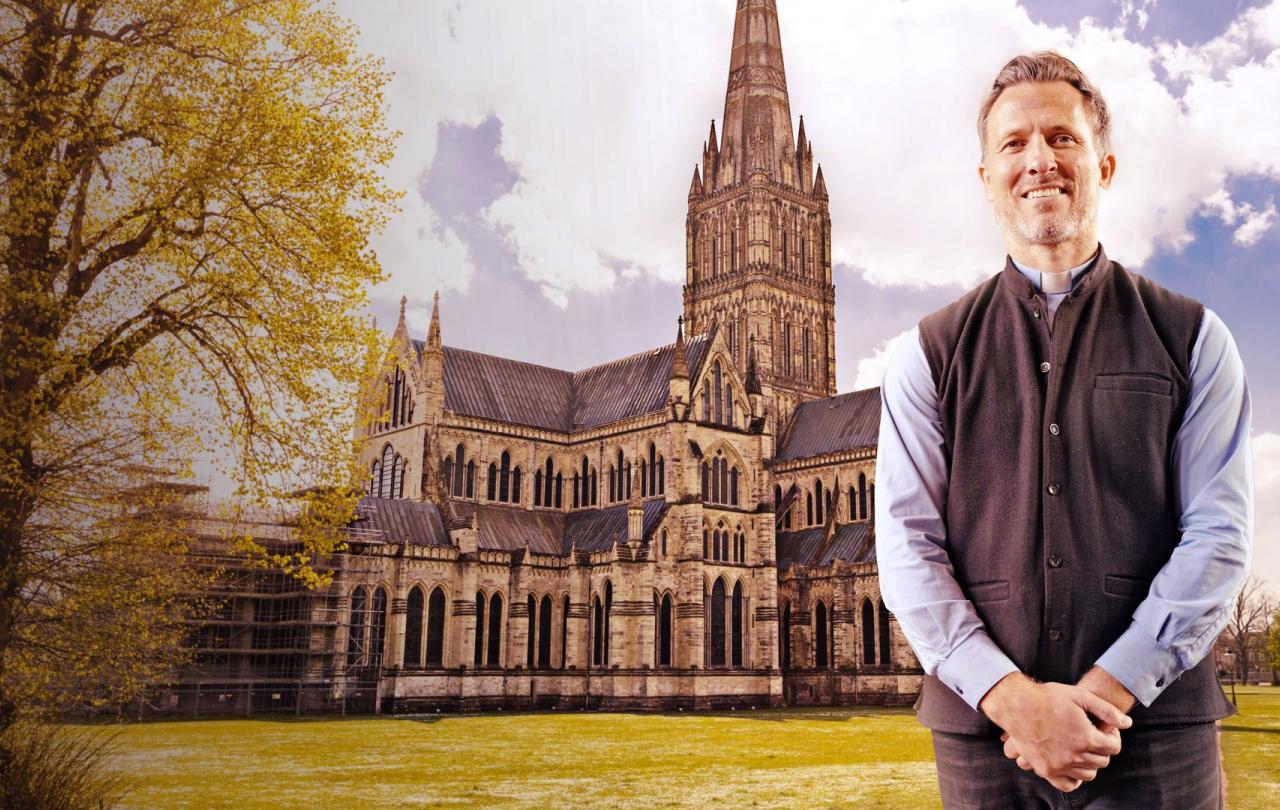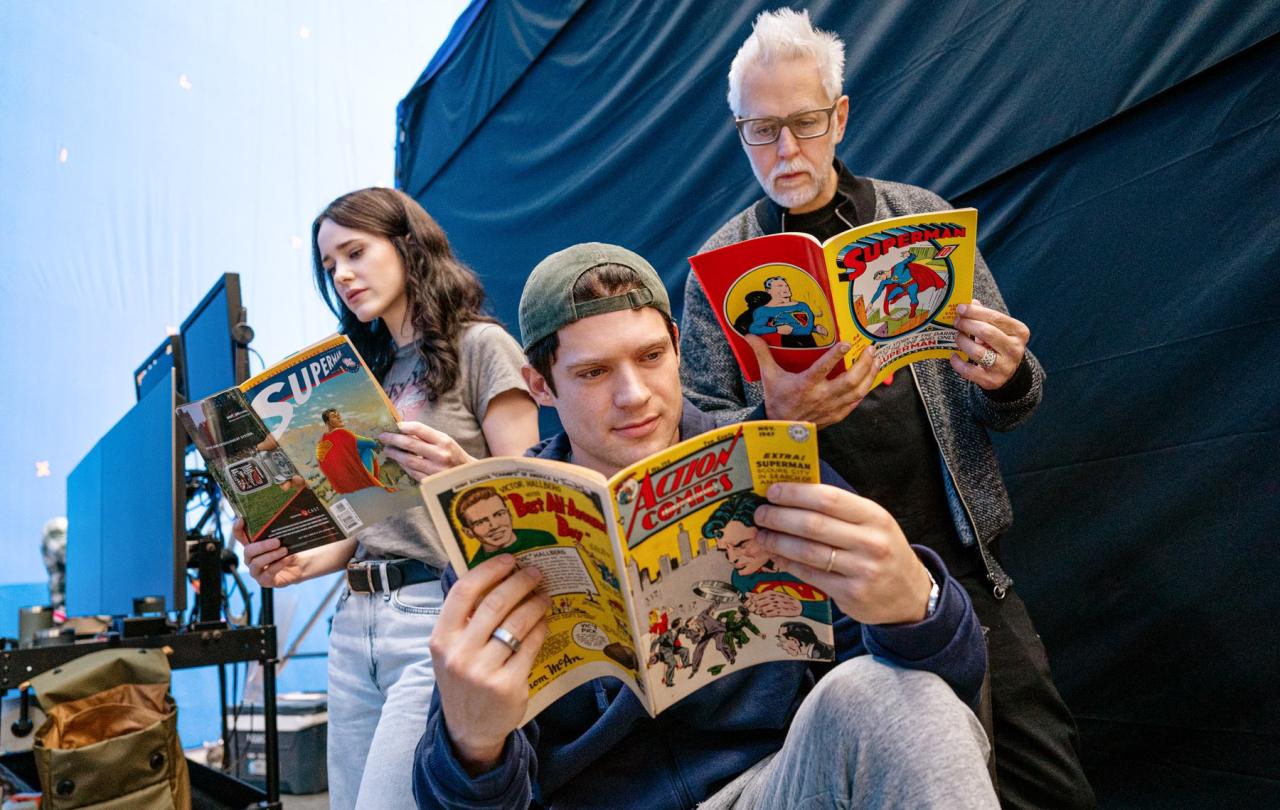
There’s a moment I love every time I drive down to visit my mum. It comes on the A30 heading south towards Salisbury. You come over a brow and round a bend and then there she is, the 123m tall spire of Salisbury Cathedral. Regal, majestic, aloof, dominant. So many words to describe this glorious building. And I remember remarking to my brother one time, who doesn’t share my Christian faith, as he sat in the passenger seat, how amazing it is that without saying a word, the architecture itself bears witness to the reality of another world, another Kingdom. Proclaiming a message to that city. A lighthouse of sorts, continually pointing people to God as they sail on rough and secular seas.
For me personally, it was a real joy to get to visit six of our most stunning Cathedrals for a two-part series I presented for Channel 5 called, Britain’s Great Cathedrals – To the Glory of God. It comes at a critical moment as cathedrals now face potential financial ruin due to the Government’s recent decisions concerning National Insurance and the Listed Places of Worship scheme. Thrilling I hear you say, but before you scroll on by, suffice it to say that these developments could see the closure of many of our nation’s most magnificent landmarks! This would be a disaster, not just for the soul of the church, but also for the soul of the country. I want to suggest three reasons for that being the case, which are their unrivalled ability to inspire (pardon the pun), inform and include.
The truth is, whether you’re a person of faith or none whatsoever, you can’t help but be inspired when you see or enter one of these buildings. Whether it’s the glorious facade of Lincoln, the expansive nave of Canterbury, or the sheer strength and grandeur of Durham, these edifices were built to amaze and generate awe. Why else would I say ‘wow’ almost 900 times in just two episodes?! Take it from me, you run out of adjectives pretty quickly. But that’s precisely the point. They were built to lift the mind and soul from the drudgery of what was all too often a pretty grim existence and place their thoughts firmly on higher things. Whether they make it all the way to Heaven itself, or go no further than a vaulted ceiling, the primary mission to inspire is achieved. Would I rather someone is impacted more by the Spirit behind the stone, or the grace behind the glass, of course I would. But would I take the needle of someone’s thoughts and worldview being moved even a fraction, as they perhaps ponder, ‘what moved these people to build this? What did a society and culture believe to prioritise and shape such real estate?’, then yes, I’d take that in a heartbeat. There’s nothing in all of Britain to rival our cathedrals to inspire.
But it’s not just that. It’s the simple truth that so much of our heritage and history is tied up in these monuments of stone and glass. Artistry developed, architectural techniques advanced, and our cathedrals were undeniably and unavoidably central to the life of the nation. As such, their ability and value to inform a people about who they are and where they come from is unmatched. People might not like it. They may even push against it. But for good or ill, it’s what made us who we are. And look a little closer, and you quickly discover that most of the values that we so embrace and espouse today herald directly from the faith proclaimed in and by these architectural marvels. Secularism has done its best to sever such values from their source, but as the historian Tom Holland has demonstrated, seeking to do so is about as logical as trying to claim that the apples on the branch of a tree have nothing to do with its roots. The facts simply don’t bear it out. And what greater facts can a city proclaim than its skyline, so often dominated by ecclesial geometry. Our cathedrals are filled with the history not just of people, but the ideas that moved them and shaped Western Civilisation. Long may they continue to inform.
One of the biggest building projects we read of in the Old Testament is Noah’s building of the ark. A behemoth of a boat, big enough to house and include all. And it’s that final idea of inclusion that perhaps speaks most powerfully today. We hear it used a lot, but all too often it’s become a synonym for an approach that has no shape, no constitution or actual covenant of belonging. What draws me to the faith behind these edifices is precisely that even as the invitation goes out into all the earth, just as Noah’s did to all creation, we only enter on God’s terms. He’s the One who calls us in and gets to name and define us all. Whilst this may at first sound narrow, it is in fact the way to liberation. Joined by common bonds and values, held together by the One to whom these buildings point. The sheer vastness of cathedrals conveys there’s room indeed for all, just as the ark had space for its guests as it made its way to a new world. The invitation of our cathedrals, both in form and opening hours, goes out into all the world declaring, ‘Come! Whoever is thirsty, let them come; and whoever wishes, let them take the free gift of the water of life.’ For the message in stone for even hearts of stone is that in Christ, all can be included.
Join with us - Behind the Seen
Seen & Unseen is free for everyone and is made possible through the generosity of our amazing community of supporters.
If you’re enjoying Seen & Unseen, would you consider making a gift towards our work?
Alongside other benefits (book discounts etc.), you’ll receive an extra fortnightly email from me sharing what I’m reading and my reflections on the ideas that are shaping our times.
Graham Tomlin
Editor-in-Chief





